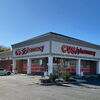Processing Your Payment
Please do not leave this page until complete. This can take a few moments.
- News
-
Editions
View Digital Editions
Biweekly Issues
- May 13, 2024
- April 29, 2024
- April 15, 2024
- April 1, 2024
- March 18, 2024
- March 4, 2024
- February 19, 2024
- February 5, 2024
- January 22, 2024
- + More
Special Editions
- Lists
- Viewpoints
- HBJ Events
- Business Calendar
- Custom Content
How to stop driving customers away
 Photo | Stephen Coburn, shutterstock.com
Photo | Stephen Coburn, shutterstock.com
 John Graham
John Graham
It takes a website visitor less than two-tenths of a second to form a first impression, according to recent eye-tracking research conducted by the Missouri University of Science and Technology.
But the study, involving college students, doesn’t stop there. It indicates that it takes about 2.6 seconds for a visitor’s eyes to focus on the portion of the website that most influences a first impression. In descending order, the sections of a website that drew the most interest were these: logo, main navigations, search box, social networking links, main image, main text content, and then bottom of the website.
As to the value of the research, Dr. Hong Sheng, an assistant professor of business and information technology at the university, says, “As more people use the Internet to search for information, a user’s first impression of a website can determine whether that user forms a favorable or unfavorable view of that organization.”
How consumers evaluate websites applies to how they make other types of decisions. Their opinions do not necessarily agree with what we think is most important. In other words, we can be driving customers and prospects away and not realize what’s happening. Here are danger signals that can alert us to trouble ahead:
• Failure to respond to customer complaints. The attractive bar and restaurant was a welcome addition to the neighborhood, but it quickly drew negative comments that quickly accumulated on Yelp, which were seemingly ignored by the management.
According to two analyst firms, Chadwick Martin Bailey and iModerate Research technologies, only 35 percent of complaints are answered. Two-thirds are missed opportunities to engage customers or resolve a complaint.
The lesson is simple: when customers contact a business or post a complaint, they expect a prompt response. If they are ignored, the impression is both indelible and viral as they “spread the bad word.”
• Not taking “no waiting” seriously. While businesses worry about customers pilfering merchandise, shoppers are equally distressed when companies steal their time.
Waiting intolerance is quickly moving into the “danger zone” for many customers, with 52 percent saying they “hated” waiting in line in grocery stores and 51 percent at mass merchandisers.
A recent study of 1,000 smartphone raises the ante even higher with 40 percent of users saying they will abandon their “real world” shopping carts at checkout counters because of long lines and another 21 percent will walk away from their cart if no register is open.
Everyone can recall in detail incidents that occurred when we were “trapped” while “waiting in line” in a store, a restaurant, on the phone or downloading something to a computer. Yet, try to recall the times when a business answered on the first ring? The negative experiences take on a life of their own.
Here’s the point: Today any waiting can result in not only a lost sale, but a lost customer as well. To offset the negative effects of waiting intolerance, eliminating delays should be a top priority. When they are inevitable, letting customers know the estimated wait time is essential.
• Failure to recognize the fragility of customer relationships. Although the problem is painfully pervasive and constantly discussed, many companies don’t take it seriously.
Customer relationships can “snap” at the very slightest provocation — or for seemingly no reason at all. And when it breaks, we’re often caught off guard and puzzled why it happened. But there’s no turning back and no opportunity to repair it.
What’s going on? Recently, while taking a regular walk along a busy road, people seemed to drive differently on their way to work than they do going home. Overall, the driving is far more orderly in the morning. But, in the afternoon, it’s quite a different story — horns honking, cutting in and out, speeding, slamming on the brakes — much more impatience on the way home. You might think it would be just the opposite — not wanting to be late to work.
The difference results from what Dr. Roy F. Baumeister and John Tierney call “decision fatigue,” in their book, Willpower. They observe, “… ordinarily sensible people get angry at their colleagues, buy junk food at the supermarket and can’t resist the car dealer’s offer to rustproof their new sedan.” Baumeister’s various experiments point to the conclusion that stressful experiences, making countless daily decisions and enduring a myriad of aggravations can sap our willpower. And even those who may be good drivers in the morning have less self-control in the afternoon.
If “decision fatigue” is the culprit, then here is what we can do about it: everyone in a company needs to be super sensitive to customer feelings and respond with understanding.
• Lack of appreciation for what customers value. At a time when business is focused on customer satisfaction issues, it’s strange that this is a problem. In fact, it may be the wrong focus, as two Princeton social psychologists, Drs. Susan T. Fiske and Nicolas O. Kervyn point out. When studying more than 5,000 adults and 41 leading brands they concluded that features and benefits tell only part of the story.
They found that we judge brands the same way we do people. We “repeatedly judge others when we interact with them, assessing them along the same two key social dimensions that our ancestors did: warmth and competence.” Then the researchers add, “People also make the same judgments about brands — spontaneously assessing them for warmth and competence.”
When something goes wrong (for example, as it did with the alleged overheating of the new iPads), why do Apple customers tend to shrug it off, while Dell customers “prepare to do battle” when they have a problem? Apple customers have faith in the company to the point that they aren’t worried, while Dell customers may lack that same level of confidence.
It’s no minor point that the specially manufactured glass used in every Apple storefront sends a crystal clear message: nothing gets between Apple and its customers.
The researchers point out that Southwest Airlines avoids most of the usual industry fees that drive travelers crazy. Bank of America learned that lesson quickly when it was faced with a customer revolt early in 2012. This may help explain BofA’s major branch upgrade program that downplays products and emphasizes a comfortable environment for conversations with customers.
The two social psychologists suggest that when features and benefits alone are used to market products, it’s difficult to predict “large portions of customer purchase and loyalty behavior.” Yet, when warmth and competence perceptions become part of the mix, “an incremental 15-40 percent of the variance in customers’ behavior is explained, highlighting their significant impact on purchase and loyalty.” It’s what they call “the Principle of Worthy Intentions.”
There’s a powerful lesson in all this: When genuine warmth and competence are components of a sales message, there’s a significant competitive advantage, as companies such as GEICO, Progressive Insurance, Southwest Airlines, Ford and Wegmans Food Markets have discovered.
All this suggests that the red flags are flying and that far too many companies are preoccupied with how they view themselves. Unfortunately, what they see in the mirror is an image that has little room for customers, no matter what they may say. Their behavior betrays them as they drive customers away.
John R. Graham of GrahamComm is a marketing and sales consultant and business writer in the Boston area. Contact him at johnrg31@me.com or via johnrgraham.com.

2022 Giving Guide
This special edition informs and connects businesses with nonprofit organizations that are aligned with what they care about. Each nonprofit profile provides a crisp snapshot of the organization’s mission, goals, area of service, giving and volunteer opportunities and board leadership.
Learn more
Subscribe
Hartford Business Journal provides the top coverage of news, trends, data, politics and personalities of the area’s business community. Get the news and information you need from the award-winning writers at HBJ. Don’t miss out - subscribe today.
Subscribe
2024 Book of Lists
Delivering Vital Marketplace Content and Context to Senior Decision Makers Throughout Greater Hartford and the State ... All Year Long!
Read Here-
2022 Giving Guide
This special edition informs and connects businesses with nonprofit organizations that are aligned with what they care about. Each nonprofit profile provides a crisp snapshot of the organization’s mission, goals, area of service, giving and volunteer opportunities and board leadership.
-
Subscribe
Hartford Business Journal provides the top coverage of news, trends, data, politics and personalities of the area’s business community. Get the news and information you need from the award-winning writers at HBJ. Don’t miss out - subscribe today.
-
2024 Book of Lists
Delivering Vital Marketplace Content and Context to Senior Decision Makers Throughout Greater Hartford and the State ... All Year Long!
ABOUT
ADVERTISE
NEW ENGLAND BUSINESS MEDIA SITES
No articles left
Get access now
In order to use this feature, we need some information from you. You can also login or register for a free account.
By clicking submit you are agreeing to our cookie usage and Privacy Policy
Already have an account? Login
Already have an account? Login
Want to create an account? Register
Get access now
In order to use this feature, we need some information from you. You can also login or register for a free account.
By clicking submit you are agreeing to our cookie usage and Privacy Policy
Already have an account? Login
Already have an account? Login
Want to create an account? Register





0 Comments